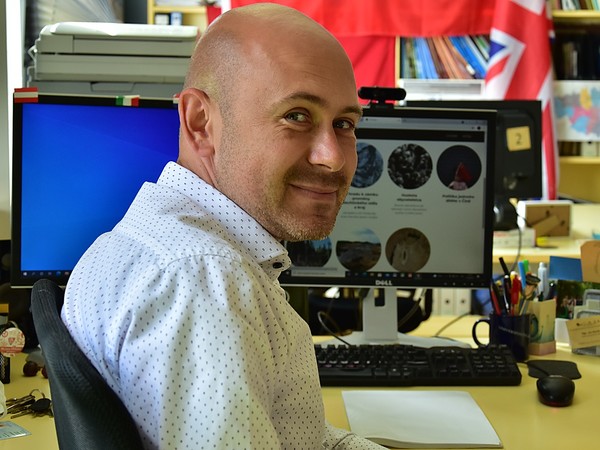The new Geoskop (Geoscope) web platform, intended to support the teaching of geography at primary and secondary schools, is being prepared by geographers from the UP Faculty of Science. The portal, which will offer tasks suitable for distance and full-time education, is now in the phase of technical development and content fulfillment with pilot tasks. It should be operational next year.
“Geoskop is meant to provide teachers and students with a modern educational portal, where they can find a set of logically arranged teaching and methodological materials and activities. These can be used for distance and full-time teaching of geography at primary and secondary schools. When creating the portal and individual activities, we tried to base the main principles and requirements on modern pedagogy,” said project leader Jan Hercik from the Department of Geography, UP Faculty of Science.
In creating the portal, the authors drew on recent experience gained in recent months, when distance learning was introduced to schools due to the coronavirus pandemic. “We want to use the already existing technical means and tools to support activating teaching of geography,” said Hercik.
According to Hercik, the Internet does not have to be just a source of texts, photos, or videos in teaching, it can also provide a fun form of learning. “We want to offer students an environment for interactive solutions to geographical problems, in which they can discover, deepen and fixate more general geographical knowledge by examining a specific problem. At the same time, they will develop not only digital skills and analytical thinking, but also interdisciplinary insight.”
The authors of the project are now conducting a nationwide collection of questionnaires on experiences with distance learning at universities during the past three semesters affected by the Covid-19 pandemic. Observations of university students will be useful not only for the organisation of university teaching, but they can also be used in the choice of methods and procedures of distance learning for lower levels of education.
Conference on forms of distance learning connected teachers and students
According to Hercik, distance learning brings with it a whole range of didactic, pedagogical and psychological difficulties and risks. “In general, the younger the pupils, the greater the risk. The same applies for pupils with special educational needs. For them as well, distance learning was not the best,” he pointed out.
During distance learning, children cannot develop natural social contacts with other pupils. They often lose these important contacts due to long-term separation. Another major obstacle to distance learning was the often unsatisfactory environment in which students had to study. The home environment often does not provide children with enough peace and privacy during distance learning.
“After the children returned to school, it turned out that the differences among the pupils were even bigger due to the long distance learning. Other pitfalls of distance learning can be observed from the perspective of teachers. Especially in the first weeks and months, many teachers, often with minimal methodological guidance, bravely embarked on the hitherto uncharted waters of distance learning. As with the pupils, the differences in the quality of their teaching gradually became more apparent in the case of teachers. While some teachers overwhelmed students with a number of online tests and lessons, others tried to come up with interesting projects or made instructional videos,” Hercik added.
On 6 May, participants of the introductory online conference which was focused on this current topic discussed the forms of distance learning in the past year marked by the coronavirus pandemic. The conference brought together teachers and students from across all levels of education. Over eighty participants met virtually on the Zoom platform. They exchanged experiences and observations regarding teaching at universities, secondary and primary schools, described the problems found, the dead ends of distance learning, and new solutions that can be useful in this type of education.
Many of the tools and procedures discussed by the conference participants can be used in full-time teaching after the return of children and students from the distance regime back to schools. After the joint plenary meeting, the conference continued in two parallel sections focused on teaching geography and history. Colleagues from the Department of History of the UP Faculty of Arts also participate in the Geoskop project.
The Technology Agency of the Czech Republic project ‘TA ČR Geoskop: distance learning of geography at basic schools and grammar schools’ involves the Department of Geography of the Faculty of Science and the Department of History of the UP Faculty of Arts together with the Klvaň Secondary School and Secondary Medical School in Kyjov, the TGM Primary School in Otrokovice, and the Jungmannova Primary School in Litovel.
